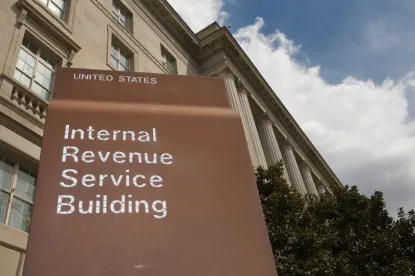In recent guidance, the IRS surprised plan sponsors with its plan to prevent them from using one means of “de-risking” their defined benefit pension plans to reduce their pension plan liabilities. In Notice 2015-49, the IRS indicated its intention to amend the required minimum distribution (RMD) regulations to prevent plan sponsors from making a lump-sum payment option available to participants currently receiving distributions in the form of annuity payments. While this change in policy may cause some plan sponsors struggling with growing pension plan liabilities to rethink their de-risking strategy, it is unlikely to end the practice altogether.
Pension Plan De-Risking and Lump-Sum Windows
As their pension plan liabilities have mounted in recent years, cash-strapped defined benefit pension plan sponsors have increasingly turned to de-risking strategies to limit their exposure. Sponsors have used the following strategies:
-
Offering limited “lump-sum windows,” during which period plan participants already receiving annuity distributions may elect to receive a lump-sum buyout of those payments, and plan participants whose benefits have not yet begun may elect a lump-sum distribution (even if such distributions are not otherwise available under the plan);
-
Purchasing deferred annuity contracts to fund the plan’s promised benefits; and/or
-
Shifting a significant portion of their pension plan investments from equities to long-term bonds and fixed-income investments
When implementing lump-sum window programs, many companies have looked to the de-risking methods used by General Motors and Ford Motor Company for guidance, believing that the IRS blessed those approaches in “private letter rulings” (PLR 201228051 and PLR 201228045) issued in July, 2012. While an IRS private letter ruling can’t be relied upon by anyone other than the party requesting it, plan sponsors have nevertheless used the rulings as roadmaps for their own de-risking strategies.
In the private letter rulings, the IRS concluded that offering a lump-sum option to participants currently receiving benefits would not violate the RMD regulations (See Treas. Reg. §1.401(a)(9)-1 et. seq.) The RMD rules mandate when qualified retirement plans must begin making distributions to participants, and generally prohibit plans from modifying the timing of distributions once benefits commence. However, in its July 2012 letter rulings, the IRS reasoned that implementing a lump-sum window would fit within a narrow exception permitting plan amendments that result in an increase in benefits.
New Notice Supersedes Prior Guidance
Notice 2015-49 supersedes the approach the IRS approved in the private letter rulings, concluding that offering lump-sum windows to plan participants whose benefits are already in pay status will violate the RMD regulations. This new guidance does not, however, prevent plan sponsors from offering a lump-sum windows to participants whose benefits are not in pay status (e.g., participants who are vested in their benefit, but who have not yet begun receiving distributions). The Notice provides that, in addition to ensuring the taxation of pension distributions is not unduly deferred, the RMD rules also regulate any changes to a participant’s form of benefit that would accelerate ongoing annuity payments. Implementing a lump-sum window program as a de-risking strategy would run afoul of the latter requirement.
To implement its change in policy, the IRS will revise the RMD regulations to limit the exception for plan amendments providing increased benefits only to amendments that increase the amount of ongoing annuity payments, but that don’t accelerate the timing of those payments.
Effective Date of Change
The new requirements are effective as of July 9, 2015. However, Notice 2015-49 offers some relief to plan sponsors that have already adopted lump-sum window programs providing participants whose benefits are in pay status the option to receive a lump-sum payout. The revised RMD regulations are not expected to apply to plan amendments implementing lump-sum window programs:
-
Adopted (or specifically authorized by the plan sponsor’s board, retirement plan committee, or a similar body with authority to amend the plan) prior to July 9, 2015;
-
Approved by the IRS (through a private letter ruling or determination letter) prior to July 9, 2015;
-
Communicated (in writing) to affected plan participants prior to July 9, 2015. The communication must state the plan sponsor’s explicit and definite intent to implement a lump-sum window for participants whose benefits are in pay status; or
-
Adopted under an agreement between the plan sponsor and a union entered into and binding prior to July 9, 2015. Any such agreement must specifically authorize implementation of a lump-sum window for participants whose benefits are in pay status.
Key Takeaways
Notice 2015-49 makes it clear that, going forward, pension plan sponsors can no longer de-risk their plans by offering lump-sum window programs to participants currently receiving benefit payments. Plan sponsors in the process of implementing a lump-sum window program may, however, be permitted to do so if they meet the requirements described above.
While the IRS’ new guidance removes one approach to de-risking pension plans, it leaves in place other means of de-risking (including offering lump-sum payment options to participants whose benefits are not in pay status). As a result, the guidance is unlikely to slow the use of de-risking strategies by plan sponsors struggling to limit growing pension plan liabilities.




 />i
/>i

